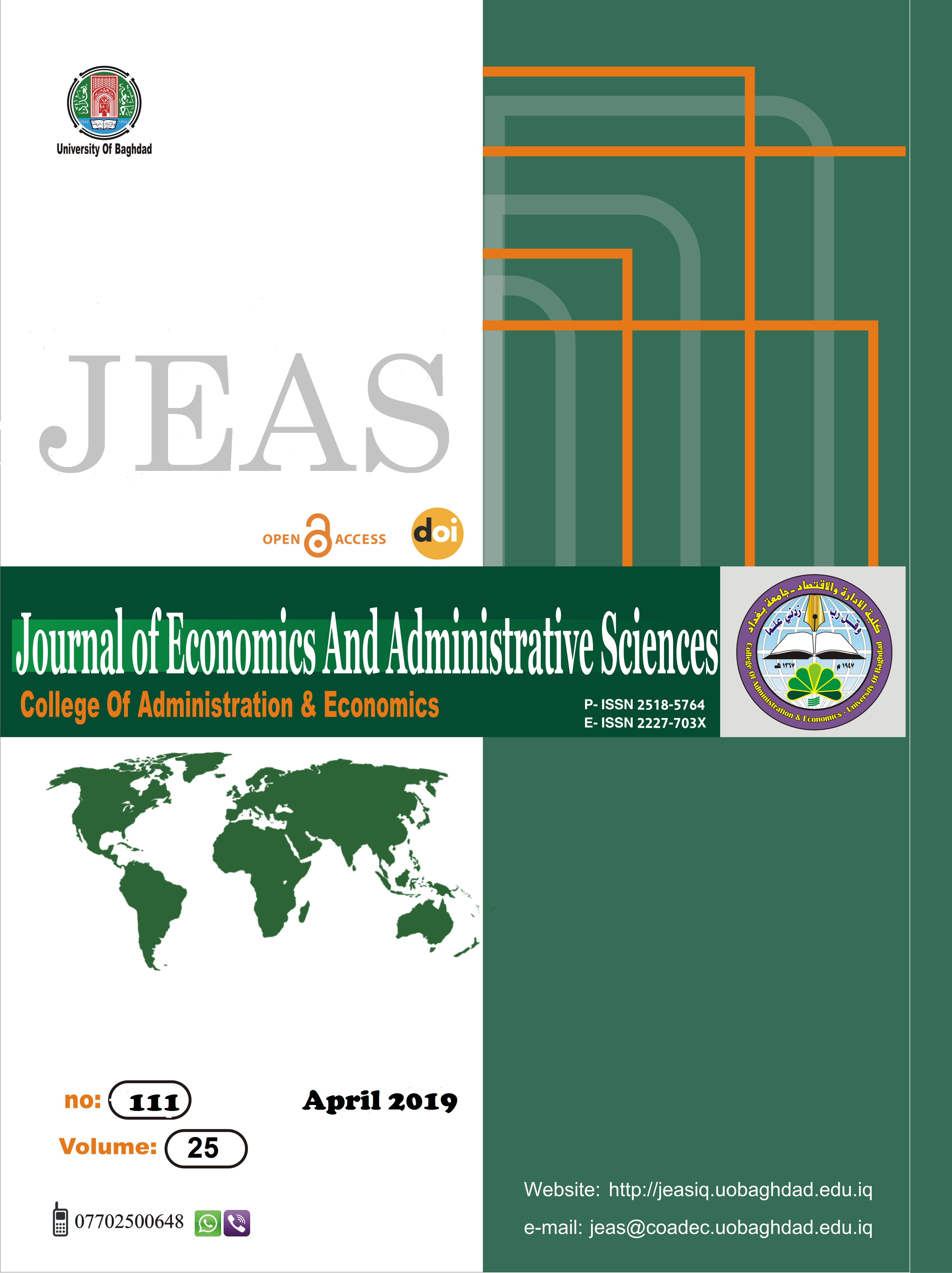Core competencies and Their Role in Enhancing Organizational flexibility: An Analytical Study of the Views of a Sample of Employees in Presidency University of Mosul
DOI:
https://doi.org/10.33095/jeas.v25i111.1624Keywords:
القدرات الجوهرية, المرونة التنظيمية., core competencies, organizational flexibility.Abstract
Abstract
The study aims to identify the levels of core competencies dimensions and types of organizational flexibility in the investigated organization, as well as to determine the nature of the relationship and the impact of core competencies dimensions with the process of organizational flexibility. Thus, a number of research questions were presented to express the research problem as follows:
- What is the level of the investigated individuals' awareness to core competencies and organizational flexibility across their dimensions and types in the investigated organization?
- To what extent are core competencies and organizational flexibility available in the Organization?
- What is the nature of the relationship and impact between core competencies and organizational flexibility at the level of the investigated organization?
The data were collected using a questionnaire form as the main tool for the study from a random sample of (64) employees in the University of Mosul presidency, the results were reached by adopting a number of statistical methods (frequencies, percentages, and the arithmetic mean). The results of the study confirm the existence of a correlation and significant effect between the core competencies and organizational flexibility in terms of the dimensions and types in the investigated organization. Based on the conclusions, a number of recommendations were presented. The most important recommendation is that senior management in the investigated organization should enhance the level of actual contribution of organizational core competencies to organizational flexibility through activating and adopting best possible practices.
Downloads
Published
Issue
Section
License
Articles submitted to the journal should not have been published before in their current or substantially similar form or be under consideration for publication with another journal. Please see JEAS originality guidelines for details. Use this in conjunction with the points below about references, before submission i.e. always attribute clearly using either indented text or quote marks as well as making use of the preferred Harvard style of formatting. Authors submitting articles for publication warrant that the work is not an infringement of any existing copyright and will indemnify the publisher against any breach of such warranty. For ease of dissemination and to ensure proper policing of use, papers and contributions become the legal copyright of the publisher unless otherwise agreed.
The editor may make use of Turtitin software for checking the originality of submissions received.


























